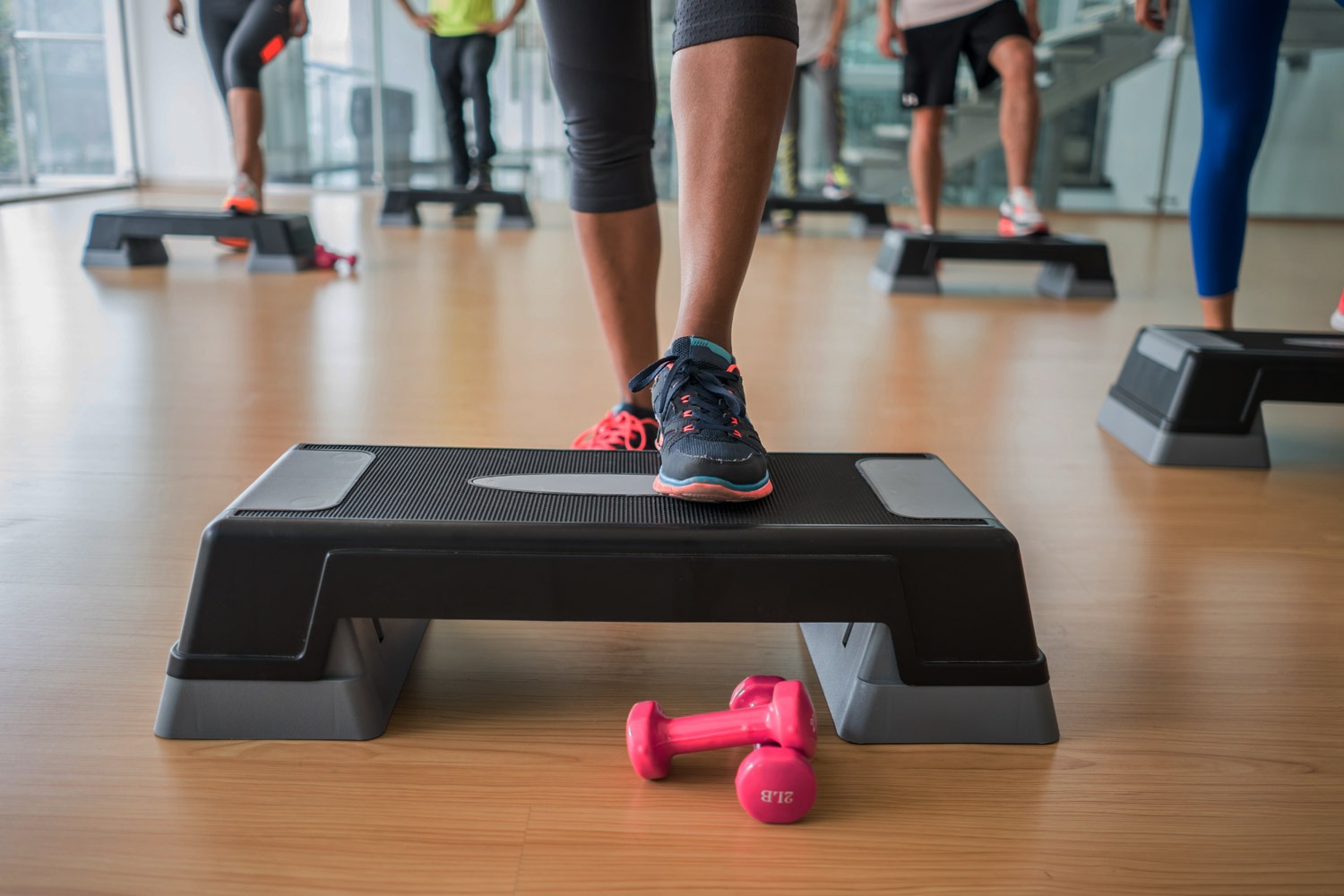When it comes to losing weight, the right exercises can make a significant difference in reaching your goals. Incorporating exercises that burn calories and improve fitness is essential for effective weight loss. Whether you enjoy running, swimming, or weight training, there are options for you to consider. Finding the best activities to suit your interests will help you stay motivated and committed.
Understanding the fundamentals of weight loss shows just how important physical activity is in burning more calories than you consume. Engaging in full-body workouts can target multiple muscle groups, giving you a comprehensive approach to fitness. Each exercise offers unique benefits that can enhance your weight loss journey.
Many individuals grapple with what exercises will yield the best results. This blog post will highlight the most effective workouts and provide strategies to help you maximize your efforts. You will also discover tips for creating a routine that supports your weight loss plan.
Key Takeaways
- Different exercises can effectively support your weight loss journey.
- Engaging in diverse activities helps you burn calories efficiently.
- Staying committed to a routine will improve your chances of success.
Fundamentals of Weight Loss
Weight loss is about creating a balance between the calories you consume and the calories you burn. Understanding how your body uses energy and the importance of nutrition will help you set effective goals for your journey.
Understanding Calories and Metabolism
Calories are the energy units in food. To lose weight, you need to consume fewer calories than your body uses, known as a calorie deficit.
Your metabolic rate plays a big role in how many calories you burn daily. It can vary based on factors like age, gender, and muscle mass.
To maintain or lose weight, pay attention to your energy expenditure, which includes your basal metabolic rate (BMR) and calories burned through activities.
Caloric Needs:
- BMR: Calories your body needs at rest.
- Activity Level: Calories burned through daily activities and exercise.
The Role of Nutrition in Weight Loss
A healthy diet is crucial for weight loss. Focus on whole foods like fruits, vegetables, whole grains, lean proteins, and healthy fats. These foods nourish your body better than processed items.
A balanced diet can support your calorie deficit while providing essential nutrients.
Consider these tips for nutrition:
- Control portion sizes.
- Include a variety of food groups.
- Stay hydrated by drinking enough water.
Creating a good diet plan will enhance your weight loss efforts and make them sustainable.
Setting Realistic Goals
Setting specific and achievable goals can keep you motivated. Aim for a safe weight loss of about 1 to 2 pounds per week. This is often considered a healthy rate.
Consider breaking your goals into smaller steps. For example:
- Lose 1 pound this week.
- Walk for 30 minutes, five days a week.
Celebrate your progress, no matter how small. Remember, consistency is key. Setting realistic targets helps you stay focused and avoid frustration in your weight loss journey.
Effective Exercise Types for Weight Loss
To lose weight effectively, you should focus on a mix of cardio, strength training, and high-intensity interval training (HIIT). Each type targets different aspects of fitness and helps boost your metabolism. Flexibility and recovery workouts are also essential to stay injury-free and maintain progress.
Cardiovascular Activities
Cardio exercises are vital for burning calories and improving your heart health. Activities like running, cycling, swimming, and brisk walking can elevate your heart rate, supporting weight loss. Aim for at least 150 minutes of moderate-intensity cardio each week.
- Running burns a significant number of calories and helps build stamina. You can start with jogging and gradually increase your time.
- Swimming offers a full-body workout that is easy on the joints. It’s effective in building endurance and muscle tone.
- Cycling is another excellent choice, whether you prefer outdoor rides or stationary bikes. It engages lower body muscles and boosts cardiovascular fitness.
Strength and Resistance Training
Strength training is essential for building muscle mass. The more muscle you have, the higher your metabolic rate, which means you burn more calories at rest. Aim to include strength workouts at least two days a week.
- Weightlifting targets specific muscle groups and can include free weights or machines. Focus on exercises like squats, deadlifts, and bench presses.
- Bodyweight exercises like push-ups and abs can also be effective. They help improve strength without equipment.
- Resistance bands add extra challenge to your workouts and are versatile for home use. They promote muscle growth and enhance stability.
High-Intensity Interval Training (HIIT)
HIIT combines short bursts of intense activity with brief recovery periods. This type of training can maximize calorie burn in less time and boost your metabolic rate even after you finish exercising.
- Examples of HIIT exercises include sprinting for 30 seconds followed by a minute of walking.
- You can also use bodyweight moves like burpees or jump squats that get your heart pumping.
- The key is to match your effort with your fitness level. You can start with shorter intervals and gradually increase intensity.
Flexibility and Recovery Workouts
Flexibility and recovery workouts help maintain your range of motion and allow your body to recover from more intense exercises. Neglecting flexibility can lead to injuries and soreness.
- Yoga improves flexibility and relaxation. Incorporating yoga sessions can help you recover and reduce stress.
- Stretching is essential before and after workouts. It prepares your muscles for exercise and helps them recover afterward.
- Rest days are just as critical. Proper recovery allows your muscles to rebuild, which can enhance your strength and performance in future workouts.


Exercise Strategies and Tips
Creating an effective exercise plan can help you achieve your weight loss goals. Focus on building a routine, adding variety, and tracking your progress to ensure sustainable results.
Creating a Consistent Exercise Routine
Establishing a consistent exercise routine is vital for weight loss. Aim for at least 150 to 300 minutes of moderate to vigorous physical activity each week. This can include walking, jogging, cycling, or swimming.
Try to schedule your workouts at the same time each day. Morning sessions can boost your metabolism and help you stay energized. It’s also beneficial to incorporate strength training at least twice a week.
This builds muscle, which can increase your resting metabolic rate. Consistency is key, so find a routine that fits your lifestyle and preferences.
Incorporating Variety in Workouts
Variety in your workouts keeps things interesting and can prevent boredom. Mixing cardio with strength training helps to optimize calorie burn and build muscle. Consider including exercises like:
- Running or brisk walking
- Jumping rope
- Bodyweight workouts
Try high-intensity interval training (HIIT) for efficient fat burning. This involves short bursts of intense exercise followed by rest.
Switching exercises regularly helps challenge different muscle groups and improves overall fitness. Also, consider outdoor activities or group classes for a fresh perspective.
Tracking Progress and Making Adjustments
Keep a record of your workouts and progress to stay motivated. This can include tracking your heart rate during exercises, workout duration, and calories burned. Use fitness apps, journals, or spreadsheets to document your activities.
Regularly assess your progress to see what works. If you hit a plateau, consider adjusting your routine, like adding more intensity or changing your exercises.
Consulting with a personal trainer can provide additional insights. They can help tailor your routine to your needs. Remember, adjustments are part of the process, and staying flexible is important for long-term success.
Additional Considerations for Effective Weight Loss
For weight loss to be successful, it’s important to manage more than just your workouts and diet. You need to consider factors like sleep quality and stress levels. These elements can significantly affect your progress and overall well-being.
Importance of Sleep and Stress Management
Good sleep is essential for weight loss. Aim for 7 to 9 hours of sleep each night. Poor sleep can disrupt hormones that control appetite, leading to increased hunger and cravings.
Managing stress is equally important. Chronic stress can trigger hormonal changes that lead to weight gain, especially around the abdomen. Techniques such as meditation, deep breathing exercises, or yoga can help lower stress levels.
Consider creating a relaxing bedtime routine. Limit screen time before bed and choose calming activities like reading or listening to music. This can improve your sleep quality.
Consult a healthcare provider if you suspect hypothyroidism. An underactive thyroid can contribute to weight gain and fatigue, making it harder to lose weight.
Dealing with Plateaus and Staying Motivated
Weight loss plateaus can be frustrating. If you’ve stalled on your journey, it might be time to mix up your routine. Try different workouts or increase the intensity to boost calories burned per hour.
Set small, achievable goals to keep motivation high. Tracking your progress helps you celebrate milestones, no matter how minor they seem. Focus on improvements in lean muscle mass and bone density, as both can enhance your overall health.
Remember to balance your workouts with appropriate nutrition. Eating enough protein can support muscle growth and recovery. Consider consulting a fitness professional or dietitian for personalized advice that suits your needs.
Frequently Asked Questions
Finding the right exercises for weight loss can be confusing. Here are common questions that many people have about effective workouts and routines.
What types of exercises are most effective for burning belly fat?
High-Intensity Interval Training (HIIT) and strength training are effective for burning belly fat. These types of workouts increase your heart rate and help you burn calories quickly. Other options include cardio exercises like running, cycling, and jumping rope.
How can I design an exercise routine for weight loss at home?
You can create a weight loss routine by combining bodyweight exercises and cardio. Start with 20-30 minutes of exercises like push-ups, squats, and lunges. Add in 15-20 minutes of activities like jumping jacks or jogging in place to keep your heart rate up.
How can one achieve weight loss efficiently through exercise in a 7-day period?
To see results in a week, focus on consistency. Aim for at least 30 minutes of exercise daily, mixing cardio and strength training. Monitor your diet by eating whole foods and reducing processed calories.
What are the best fat-burning exercises for females to do at home?
Some effective exercises include squats, lunges, and burpees. Cardio options like jumping rope or high-knees can boost your heart rate. Incorporating strength training with light weights or resistance bands can also enhance fat burning.
Can you lose a significant amount of weight by exercising for an hour daily?
Exercising for an hour each day can lead to weight loss when combined with a proper diet. Many people can lose 1-2 pounds a week with consistent exercise and healthy eating habits. The key is to maintain a calorie deficit.
What are some proven workouts that can help to reduce belly fat?
Workouts like planks, mountain climbers, and bicycle crunches specifically target belly fat. Combining these with cardio exercises can enhance results. Aim for at least 150 minutes of moderate aerobic activity weekly for better outcomes.




